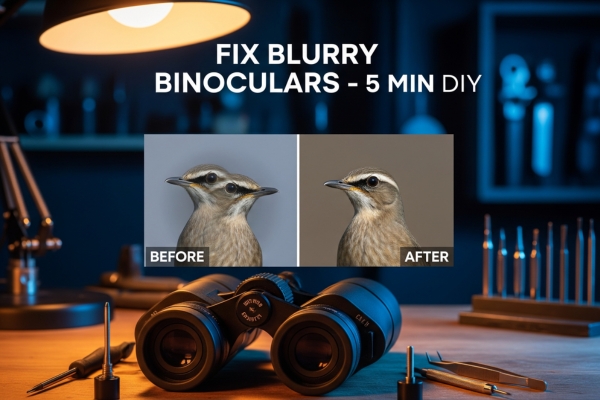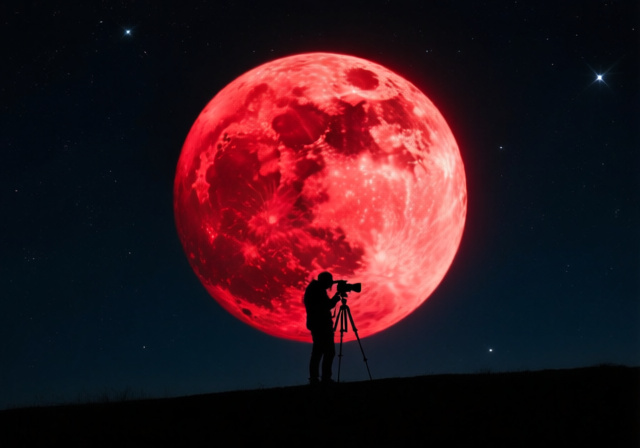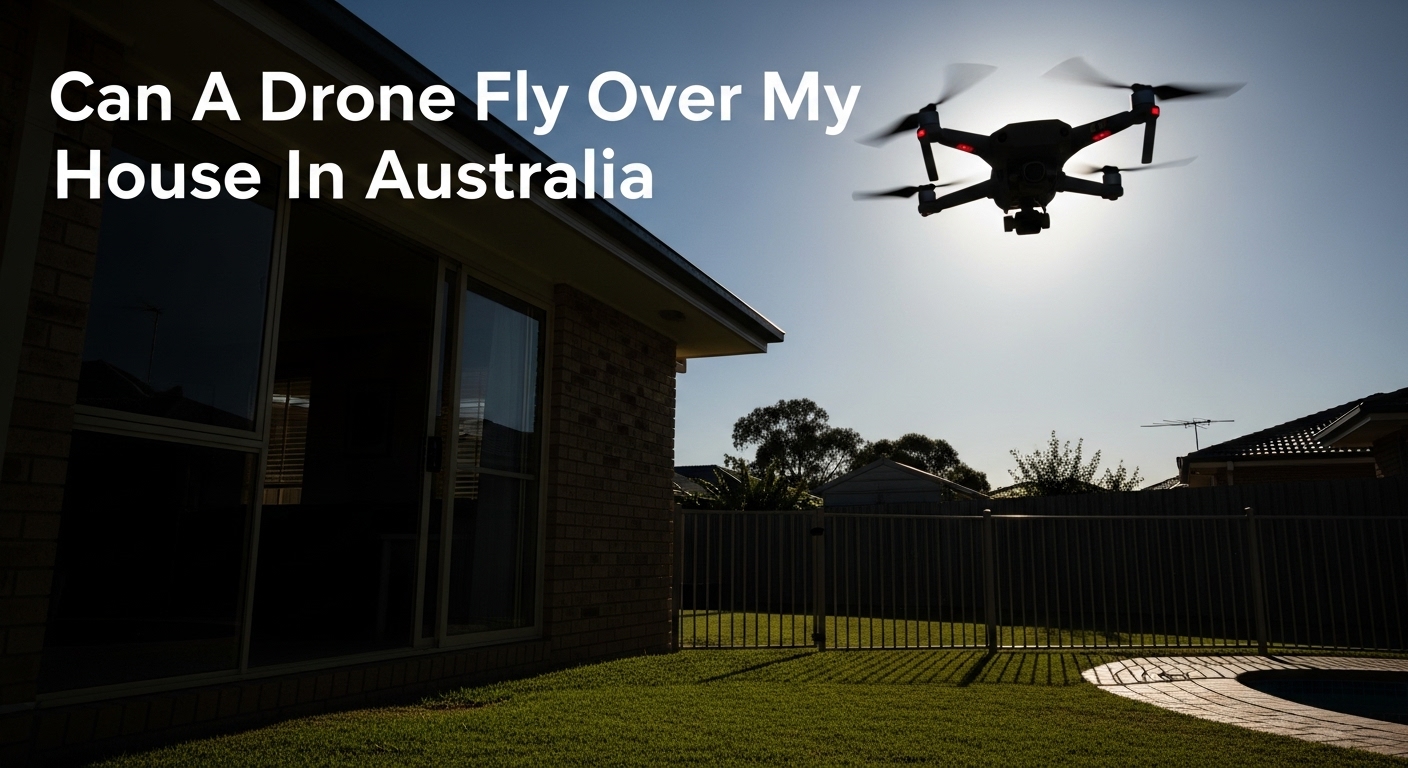



If you’re seeing double images through your binoculars or experiencing eye strain after just a few minutes of use, your binoculars likely need collimation. I’ve been adjusting and repairing optics for over a decade, and binocular collimation is one of those essential skills that can save you hundreds of dollars in repair costs.
Collimation is the process of aligning the optical axes of both barrels in your binoculars so they produce a single, merged image. When binoculars are properly collimated, both optical tubes point at exactly the same spot, allowing your brain to merge the two images into one clear view. Think of it like fine-tuning two telescopes to work in perfect harmony.
In this comprehensive guide, I’ll walk you through multiple methods to test and collimate your binoculars, from simple no-tool techniques to professional-level adjustments. We’ll cover everything from understanding how binoculars work compared to monoculars to advanced troubleshooting techniques that even some repair shops don’t know about.
Before we dive into the actual collimation process, it’s crucial to understand what’s happening inside your binoculars. Each barrel contains a complex system of lenses and prisms that must be precisely aligned. The objective lenses gather light, the prisms correct and flip the image, and the eyepieces magnify the view. When any of these elements shift even slightly, collimation problems arise.
There are two main types of misalignment in binoculars: vertical and horizontal. Vertical misalignment means one barrel is looking slightly up or down compared to the other. This type causes the most discomfort because our eyes struggle to compensate for vertical differences. Horizontal misalignment, where the barrels point slightly inward or outward, is easier for our eyes to adjust to, but it still causes fatigue and reduces image quality.
The prism system in your binoculars plays a critical role in maintaining collimation. Porro prism binoculars have offset barrels and are generally easier to collimate because the prisms are mounted in separate housings. Roof prism binoculars, with their straight-through design, are more compact but often more challenging to adjust because the prisms are housed in a single assembly.
Several factors can cause binoculars to lose collimation. Dropping them is the most common cause, but even regular use and temperature changes can gradually shift the internal components. Storage in hot cars, airline baggage handling, or even vigorous cleaning can knock binoculars out of alignment. I’ve seen perfectly aligned binoculars develop collimation issues simply from being stored vertically for extended periods, as gravity slowly shifts the heavy objective lenses.
Recognizing collimation problems early can prevent eye strain and headaches. The most obvious sign is seeing double images that won’t merge no matter how you adjust the focus or interpupillary distance. But there are subtler indicators too.
Eye fatigue that develops quickly during use is a classic symptom. If you find yourself constantly trying to merge the images or your eyes feel strained after just 10-15 minutes of viewing, collimation is likely off. Some people experience headaches, particularly above the eyebrows, after using misaligned binoculars.
Another telltale sign is when you can only get a clear view by closing one eye. If the image suddenly becomes sharper and more comfortable with one eye closed, you’re dealing with alignment issues. You might also notice that vertical lines in the distance, like building edges or tree trunks, appear to have a step or offset when viewed through both barrels.
To perform a quick collimation check, find a distant horizontal line like a roofline or horizon. Look through your binoculars and slowly pull them away from your eyes while maintaining focus on the line. If you see the line split into two as the eyepiece circles separate, your binoculars need collimation.
The tools required for binocular collimation vary depending on your approach and the severity of the misalignment. For basic adjustments, you might need nothing more than what’s already in your toolbox. For professional-level work, specialized equipment makes the job more precise.
Essential tools for most collimation jobs include a set of jeweler’s screwdrivers, particularly sizes 1.4mm to 2.5mm flat head. You’ll need these to access the collimation screws hidden under rubber armor or behind small covers. A phillips head screwdriver set in similar sizes is also useful, as some manufacturers use phillips screws for adjustments.
For testing collimation, a tripod adapter is invaluable. Mounting your binoculars on a stable tripod eliminates hand shake and makes it much easier to spot alignment issues. If you don’t have a tripod adapter, you can create a stable platform using bean bags or foam blocks, though this is less convenient.
Professional collimation requires more specialized tools. A collimation telescope or autocollimator provides the most accurate alignment, but these tools cost several hundred dollars and require training to use properly. A more affordable option is a laser collimator, which projects a beam through the optical system to reveal misalignment.
For Porro prism binoculars, you might need eccentric ring tools. These specialized spanners fit into the notches around the objective lens housing and allow you to rotate the eccentric rings that control collimation. You can make these tools from stiff wire or purchase them from optical supply companies.
Additional helpful items include lens cleaning supplies, a comfortable work surface with good lighting, and patience. Collimation can be a delicate process that requires multiple small adjustments and tests. Having a helper to spot targets while you make adjustments speeds up the process considerably.
Before attempting any adjustments, you need to accurately assess your binoculars’ collimation status. There are several testing methods, each with different levels of precision and complexity.
The star test is one of the most reliable methods and requires no special equipment beyond a clear night sky. Choose a bright star and center it in your binoculars while mounted on a tripod. Defocus the image slightly until the star becomes a small disk. If the binoculars are properly collimated, you’ll see one merged disk. Misaligned optics will show two overlapping or separate disks.
For daytime testing, the distant target method works well. Find a target at least 100 yards away with clear horizontal and vertical lines, like a building or billboard. Mount your binoculars on a tripod and focus carefully. Cover the right objective lens with a piece of cardboard and note where the image appears in your field of view. Then switch, covering the left lens instead. The image should appear in exactly the same position. Any shift indicates misalignment.
The reflection method provides quick results without looking through the binoculars. Hold them at arm’s length with the objective lenses facing you. Look at the reflection of your eyes in the objective lenses. In properly collimated binoculars, you should see your pupils centered in both objectives. If one reflection appears off-center, that barrel needs adjustment.
A more technical approach uses a collimation target chart. Create or print a chart with a grid pattern and mount it at least 30 feet away. The grid lines help you see even slight misalignment. Professional repair shops use similar charts but at much greater distances for increased accuracy.
The double star test, popular among astronomers, uses closely spaced double stars to check collimation. Stars like Albireo or the Double Double in Lyra reveal alignment issues when the star pairs don’t maintain consistent spacing as you shift your viewing position slightly.
Now we’ll walk through the actual collimation process. This method works for most binoculars, though specific models may have variations. Always consult your manual if available, and consider that some high-end binoculars should only be serviced by authorized technicians to maintain warranty coverage.
Start by setting up a stable work area with good lighting. Mount your binoculars on a tripod and aim them at a target at least 100 feet away. A brick wall with clear mortar lines works perfectly. Adjust the interpupillary distance to match your eyes and focus both barrels carefully.
Locate the collimation screws on your binoculars. On Porro prism models, these are usually found under small rubber caps near the objective lenses or behind the prism housing covers. Roof prism binoculars often have screws hidden under the rubber armor near the eyepieces. Some models use eccentric rings around the objective lenses instead of screws.
Before making any adjustments, mark the current position of each screw with a fine-tip marker or take detailed photos. This allows you to return to the original settings if needed. It’s also wise to work on one barrel at a time, typically starting with the right barrel while using the left as your reference.
Make tiny adjustments, no more than 1/8 turn at a time. After each adjustment, check the view through both barrels. Vertical misalignment is usually corrected with screws on the top or bottom of the housing, while horizontal alignment uses screws on the sides. The exact configuration varies by manufacturer.
For prism tilt adjustments, you’re essentially rotating the prism assembly slightly. Turn the adjustment screw clockwise to move the image up or right, counterclockwise for down or left. These movements are often counterintuitive, so take notes as you work.
The conditional alignment method involves adjusting one barrel to match the other at a specific distance, then fine-tuning for infinity focus. Start with a target at 30-50 feet, achieve perfect merger, then check at increasingly distant targets. You may need to compromise slightly to get acceptable alignment across all distances.
After achieving satisfactory alignment, secure any adjustment screws with a tiny drop of removable thread locker. This prevents the screws from shifting during use while still allowing future adjustments. Replace any rubber caps or covers you removed during the process.
Not everyone has access to professional collimation tools, but there are effective methods using everyday items. These techniques won’t achieve laboratory precision, but they can significantly improve your binoculars’ performance.
The business card method is surprisingly effective for minor adjustments. Cut a business card to create two L-shaped pieces. Tape these to a window to create a cross pattern. Step back about 20 feet and view the cross through your binoculars. If the vertical and horizontal lines don’t form a perfect cross, you have misalignment.
The flashlight technique works well in low light. Have a helper hold a small LED flashlight at least 50 feet away in a dark room or outside at night. The pinpoint light source makes it easy to see if both barrels are targeting the same spot. As you make adjustments, the helper can confirm when the images merge.
For emergency field collimation, the infinity focus method can help. Find a distant mountain ridge or horizon line with distinct features. Adjust the prism tilt screws while viewing this distant target until the images merge. This won’t be perfect for closer objects, but it’s better than severe misalignment.
The paper target method requires only printer paper and a marker. Draw a bold cross or asterisk on the paper and tape it to a wall. View it from across the room and adjust until you see a single, clear image. The bold lines make misalignment obvious even to tired eyes.
Even with careful work, collimation can present challenges. Understanding common problems and their solutions saves time and frustration.
If you can’t achieve perfect collimation at all distances, you’re experiencing what professionals call spherical aberration or field curvature issues. This often indicates internal problems beyond simple collimation. Focus on achieving the best alignment at the distance you use most frequently.
Sometimes adjusting one screw affects both horizontal and vertical alignment. This cross-coupling happens when prisms aren’t seated properly or when adjustment mechanisms are worn. Work in smaller increments and be prepared to go back and forth between adjustments several times.
Stubborn screws that won’t turn might be corroded or over-tightened from previous repairs. Apply a tiny amount of penetrating oil and let it sit for an hour. If the screw still won’t budge, don’t force it – you risk stripping the threads or cracking the housing.
Image quality that degrades after collimation usually means you’ve overcorrected or the prisms have shifted beyond their optimal position. Return to your marked starting positions and work more gradually. Sometimes accepting 95% perfect alignment is better than chasing perfection and introducing other problems.
If collimation won’t hold and constantly needs readjustment, the adjustment screws may be stripped or the prism mounting may be damaged. Temporary fixes include using slightly thicker thread locker or placing thin shims under the prism assembly, but these are stopgap measures until proper repair.
Collimation that’s perfect in the center but off at the edges indicates optical problems beyond simple alignment. This could be decentered lenses, warped prisms, or manufacturing defects. Such issues typically require professional service or replacement.
Working on optical equipment requires careful attention to safety, both for you and your binoculars. Never look at the sun through binoculars, even during collimation testing. The concentrated light can cause instant, permanent eye damage.
When working with small screws and delicate mechanisms, use proper eye protection. Springs and small parts can fly unexpectedly when covers are removed. Work over a clean, soft surface to catch any dropped parts.
Avoid using excessive force on any adjustment. Optical components are precisely manufactured and can crack or chip under pressure. If something doesn’t move easily, investigate why rather than forcing it.
Keep your work area clean and free from dust. Even small particles inside the optical path can degrade image quality. If you must open the binocular housing, work in a dust-free environment and have lens cleaning supplies ready.
Be aware that opening your binoculars likely voids the warranty. For expensive models like high-end Vortex binoculars, consider whether DIY collimation is worth the risk versus professional service.
Never use harsh chemicals or solvents near optical surfaces. Alcohol can damage lens coatings, and acetone can dissolve plastic components. Stick to proper optical cleaning solutions and microfiber cloths.
While many collimation issues can be resolved at home, certain situations require professional expertise. Knowing when to stop and seek help prevents costly damage and ensures optimal performance.
If your binoculars have nitrogen or argon filling for waterproofing, opening them breaks the seal and allows moisture inside. Professional shops have the equipment to purge and reseal optics after service. Attempting this at home usually results in internal fogging.
High-end binoculars with complex coatings and tight tolerances benefit from professional collimation using optical benches and specialized equipment. The precision achieved with professional tools exceeds what’s possible with home methods.
When collimation problems persist despite multiple attempts, internal damage is likely. Shifted prisms, bent frames, or damaged adjustment mechanisms require disassembly and possibly replacement parts. Professional technicians have access to manufacturer parts and specifications.
Electronic image-stabilized binoculars should always be professionally serviced. The integration of electronic and optical systems makes DIY repair risky and potentially dangerous due to electrical components.
If you’re planning to use your binoculars for critical applications like wildlife observation on an Alaska cruise, professional collimation ensures reliability when you need it most.
Cost considerations also matter. Professional collimation typically costs $50-150, depending on the complexity and brand. If your binoculars are worth less than $200, DIY collimation makes economic sense. For premium optics worth thousands, professional service protects your investment.
Once you’ve achieved proper collimation, maintaining it requires careful handling and storage. Proper maintenance extends the time between adjustments and preserves optical performance.
Always use the neck strap when carrying binoculars. Most collimation problems result from drops, and a simple strap prevents the majority of these accidents. When not using the strap, store binoculars in a padded case.
Avoid extreme temperature changes that cause materials to expand and contract differently. Don’t leave binoculars in hot cars or transition quickly from air conditioning to humid outdoor conditions. Let them gradually adjust to temperature changes when possible.
Store binoculars horizontally in their case rather than standing vertically. This prevents gravity from slowly shifting heavy objective lenses and prisms over time. Use the supplied eyepiece and objective lens covers to protect against dust and impacts.
Regular cleaning maintains optical performance and allows you to spot developing problems early. Clean the exterior monthly and check that adjustment screws remain tight. If you notice any looseness, apply a small amount of thread locker before the screw works completely free.
Handle focus adjustments smoothly without forcing mechanisms at their limits. Aggressive focusing can stress internal components and gradually affect alignment. Teach anyone who borrows your binoculars to handle them gently.
Consider having professional service every 3-5 years, even if collimation seems fine. Technicians can clean internal optics, lubricate mechanisms, and spot developing issues before they become serious problems.
Different binocular designs require specialized approaches to collimation. Understanding these variations helps you work more effectively with your specific model.
Zoom binoculars present unique challenges because collimation must work across the entire magnification range. Start by collimating at the highest magnification, where misalignment is most obvious. Then check at lower magnifications and find a compromise setting that works reasonably well throughout the zoom range.
Compact binoculars often lack external adjustment screws, with collimation set at the factory using special jigs. Some models have internal adjustments accessible only by removing the rubber armor. This requires careful work to avoid tearing the armor or losing the adhesive properties needed for reassembly.
Military and marine binoculars with individual eyepiece focus require a different approach. Collimate each eyepiece separately at infinity focus, then check that they maintain alignment when focused at closer distances. The robust construction of these models usually maintains collimation well once properly set.
Image-stabilized binoculars without electronic stabilization use prism suspension systems that can complicate collimation. The moving prisms must be locked in their neutral position during adjustment. Consult model-specific guides for the locking procedure.
Giant astronomy binoculars with interchangeable eyepieces need collimation checks whenever eyepieces are changed. Different eyepieces can have slight optical axis variations. Mark your eyepiece pairs and note any collimation adjustments needed for each set.
Vintage binoculars often use different adjustment mechanisms than modern models. Brass adjustment screws may be hidden under leather covering or require special tools no longer commonly available. Research your specific model through collector forums before attempting adjustments.
Deciding between DIY and professional collimation involves weighing several factors beyond just the immediate cost. Understanding the full picture helps make an informed decision.
Professional collimation typically costs $75-150 for standard binoculars, with premium brands sometimes charging more. This includes inspection, cleaning, and adjustment using professional equipment. Many shops also provide a short warranty on their work.
DIY collimation requires initial tool investment of $30-50 for basic equipment. While this seems economical, consider the time investment and learning curve. Your first collimation might take several hours and multiple attempts.
The risk factor varies with binocular value. Damaging $100 binoculars during DIY collimation is annoying but not catastrophic. Making mistakes on $2000 optics could result in expensive repairs or replacement. Insurance typically doesn’t cover damage from owner servicing.
Consider your technical comfort level and available time. If you enjoy working with precision instruments and have patience for careful adjustment, DIY collimation can be satisfying. If you prefer quick solutions or lack confidence with delicate work, professional service makes sense.
Frequency of need affects the calculation too. If you own multiple binoculars or frequently buy used optics needing adjustment, learning collimation pays dividends. For a single pair used carefully, professional service every few years might be more practical.
With careful handling, quality binoculars might go years without needing collimation. However, if you use them frequently, transport them often, or notice any viewing discomfort, checking collimation annually is wise. Heavy field use or any drops warrant immediate checking.
Not all binoculars have user-accessible collimation adjustments. Many compact and budget models are factory-set with no external adjustments. Premium brands sometimes deliberately make adjustments difficult to access, preferring professional service to maintain precision.
Most manufacturers consider opening the housing or adjusting internal mechanisms as warranty-voiding actions. Some brands like Vortex have transferable lifetime warranties that might still cover defects but not damage from owner servicing. Always check warranty terms before attempting adjustments.
Try viewing through each barrel separately. If each eye sees a clear image individually but you struggle with both eyes, it’s likely collimation. Also, have someone else with good vision try your binoculars. If they also see double images, the problem is definitely the optics.
Focus problems affect image sharpness but maintain a single image. Collimation problems create double images or eye strain even when focus is perfect. You can have sharp focus but poor collimation, resulting in two sharp but separate images.
Minor drops often only affect collimation, which you can fix. However, severe impacts can bend frames, shift prisms beyond adjustment range, or crack optical elements. If collimation attempts don’t resolve issues from a significant drop, internal damage likely requires professional repair.
For binoculars under $50, replacement might be more practical than collimation. However, if they have sentimental value or you want practice before working on better optics, attempting collimation on cheap binoculars provides valuable learning experience with low risk.
Your first attempt might take 2-3 hours including setup, testing, and multiple adjustments. With experience, basic collimation can be completed in 30-45 minutes. Complex problems or difficult-to-access adjustments can still require several hours even for experienced users.
Mastering binocular collimation transforms a frustrating pair of optics into the precision instrument they were designed to be. Whether you choose the DIY route or professional service, understanding the principles and processes involved helps you make informed decisions about maintaining your equipment.
We’ve covered everything from basic theory to advanced techniques, giving you the knowledge to assess and address collimation issues. The key points to remember are working methodically, making small adjustments, and knowing when to seek professional help.
Properly collimated binoculars provide comfortable, strain-free viewing that enhances every observation session. The time invested in learning these techniques pays off through years of improved optical performance and the satisfaction of maintaining your own equipment.
Take time to practice these techniques on less valuable optics before working on premium binoculars. Document your specific models’ adjustment locations and quirks for future reference. Most importantly, be patient with the process – good collimation requires precision, not speed.
Regular collimation checks and prompt attention to alignment issues keep your binoculars performing at their best. Whether you’re birdwatching in your backyard or exploring distant vistas, properly aligned optics make every view more enjoyable and reduce the eye fatigue that can cut observation sessions short.







